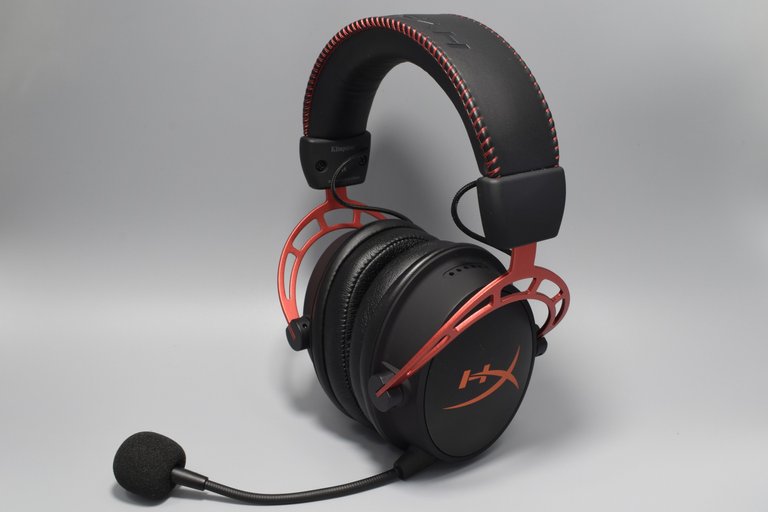
Regardless of the platform you game on, your headphones are a vital part in your interaction with the virtual environment. In addition to good sound quality, a gaming headset must offer an ergonomic design, that is as comfortable as possible in long gaming sessions, a solid build quality, that is able to withstand everyday abuse, and a very good microphone, for effective team communication. Unfortunately, most peripheral manufacturers do not strive to achieve the best balance between these features, preferring instead to entice their buyers with RGB lighting systems, surround sound emulations, that sounds good only on paper, and customization software, which is often unreliable and difficult to use. In other words, the attention of the consumer is directed more towards the visual impact and less to the functionality and reliability. In the last few years I had the opportunity to test dozens of gaming headphones and so far only a small number of manufacturers have managed to attract my sympathy. Among them is HyperX, a Kingston subsidiary. The company debuted in 2002 with a line-up of RAM modules for enthusiasts and slowly managed to make its way into the competitive gaming hardware industry. And not anyway, but through a very wide range of products, with attractive specs and competitive prices.
Out of all the HyperX-signed peripherals, the Cloud gaming headset is by far the most successful. The first model, the HyperX Cloud, launched in 2014 and enjoyed a very positive reception from consumers, thanks to its robust and convenient design, excellent quality/price ratio, but also to the lack of lightning effects and other useless features. Subsequently, the company came to the market with an improved version, the Cloud II, which featured a dedicated USB audio card and a few small design adjustments. After that, HyperX released Cloud Revolver, a premium headset designed for first person shooter gamers, and Cloud Stinger, which brought some sacrifices in terms of build quality in favor for a much more affordable price.
In the second half of last year, HyperX introduced the Cloud Alpha, a model that aims to deliver a more enjoyable design and a better sound quality through "dual chamber" technology, which allows a more efficient sound separation, thus reducing distorsions. Its frame is made of aluminum and it has the same memory foam on the cups and headband. The microphone benefits from noise cancellation and is detachable, while the cables are worn in a very good quality textile sleeve. HyperX Cloud Alpha also comes with Discord and TeamSpeak certifications, providing us with a flawless experience in the most popular chat applications for gamers.
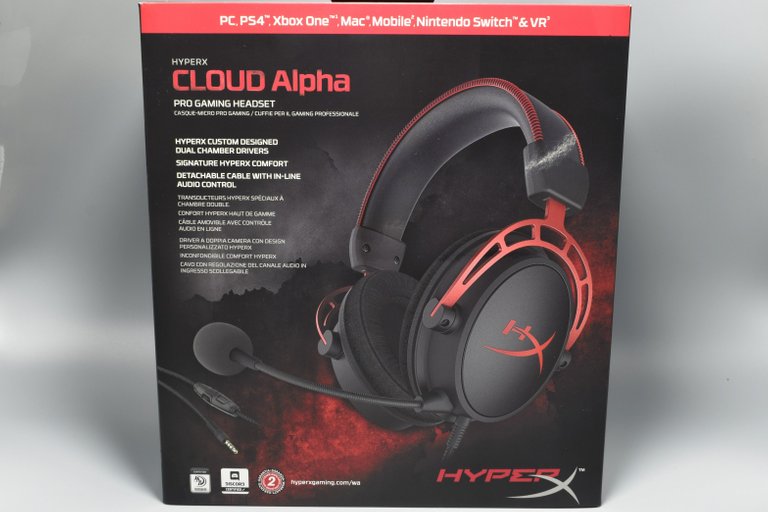
The headphones come packed in a solid, generous box, and are protected by several layers of foam. On the front of the packaging, key features, such as the noise cancellation microphone, 50 mm dual-chamber speakers and memory foam, are mentioned. In terms of accessories, we get detachable microphone, a combo jack cable, a dual jack extension and a thin carrying pocuh made out of a textile material.
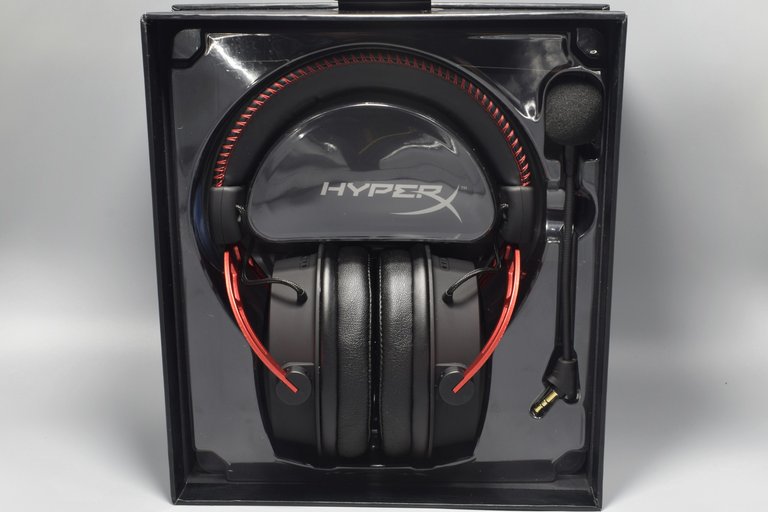
The length of the cable, with the extension attached, is of 3.3 m. Without the extension, the cable is about 1.3 m long and has a combo jack at the end, suitable for game controllers, smartphones and laptops. The headphone impedance is slightly higher than previous models, 65 ohms, but, from what I've noticed, there are no issues on smartphones or other devices with weaker amplification. The volume is pretty high regardless of the input device.

In terms of construction, the HyperX Cloud Alpha retains much of its predecessors design elements, with small changes, here and there. Thus, the cups are more spacious and accommodate 50 mm speakers, the memory foam molds better to the shape of the ears and the head, and the metal frame is a bit more flexible, no longer making strange noises when it's bent.
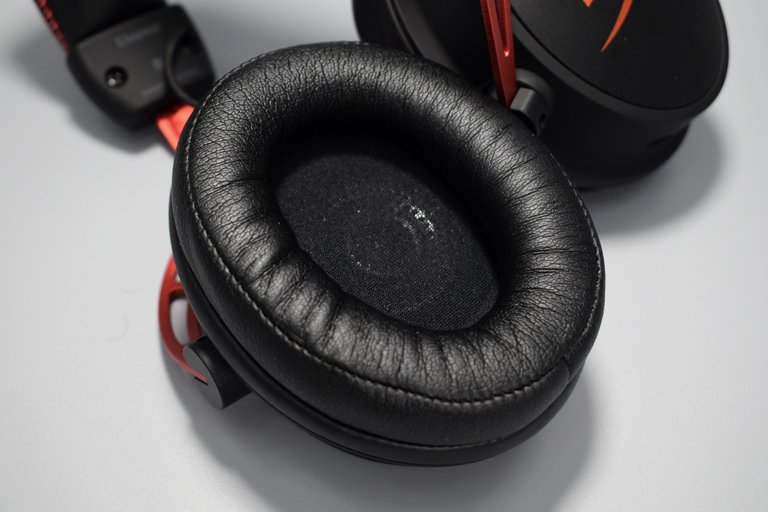
The black and red color scheme, the leather used on the cups, the solid headband and the rubber finish of the polycarbonate portions give the headphones a solid and appealing look, rarely found on a product in this price range. Another advantage of the matte surfaces is that they are not as prone to scratches and fingerprint stains. Although the design has not changed a lot, the headphones seem to be more robust and, after a few hours of good use, I can say that they fit better on the head.
The foam that stretches along the cups is soft, comfortable and fits perfectly in the shape of the ears, ensuring a very good isolation. Despite the firm contact, I didn't encounter any unpleasant sensation, such as sweaty ears. That being said, the HyperX Cloud Alpha gets a pretty good score in terms of ergonomics.
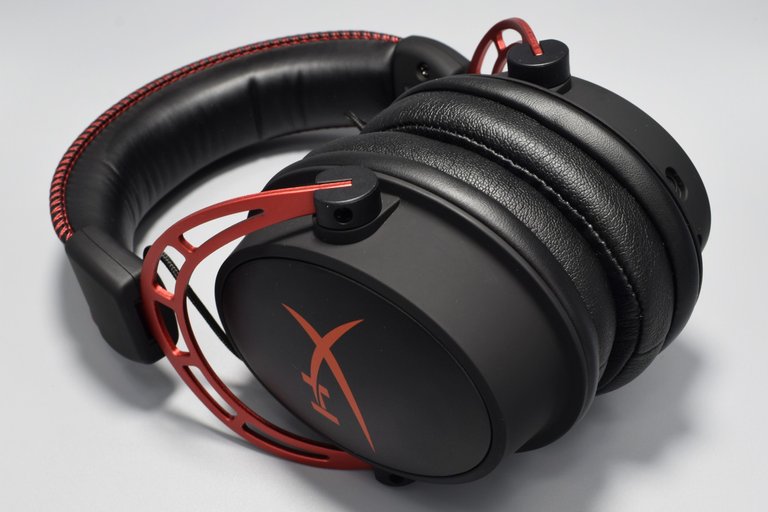
As on previous models from the Cloud series, the cups are anchored by an aluminum frame using 2 semicircles and the joint allows for a large angle of inclination for a comfortable placement. There is also a system for adjusting the height of the frame, of about 5 - 6 cm, which, once fixed in position, does not tend to move during use.
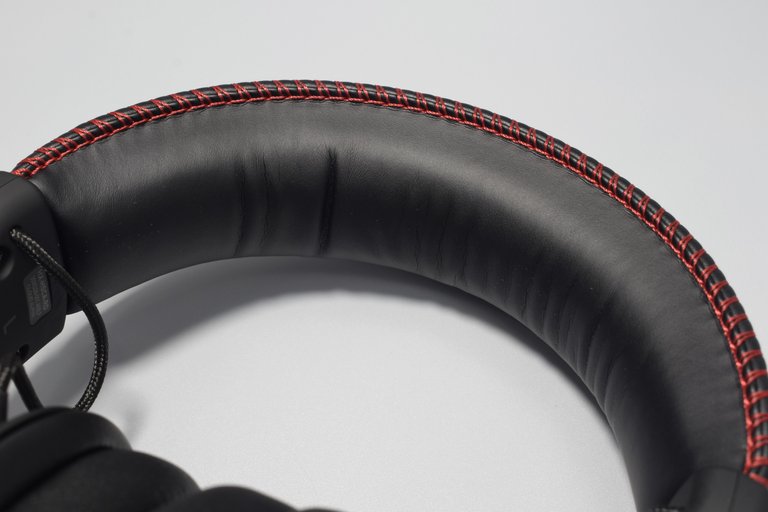
The headphones weigh 336 grams (with the microphone attached) and their weight is distributed through a thick headband, made of a high quality memory foam that does not create any discomfort during use. Practically, you will not even feel you have them on your head.
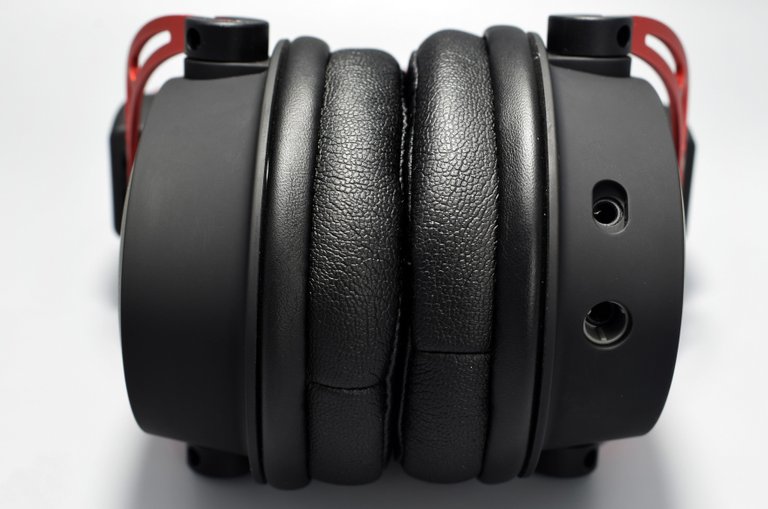
At the bottom of the left cup we have two audio jacks, one for audio input and one for the microphone. To avoid confusion, each slot comes in a distinct form - oval for the microphone and round, with small ribbons for the audio input.
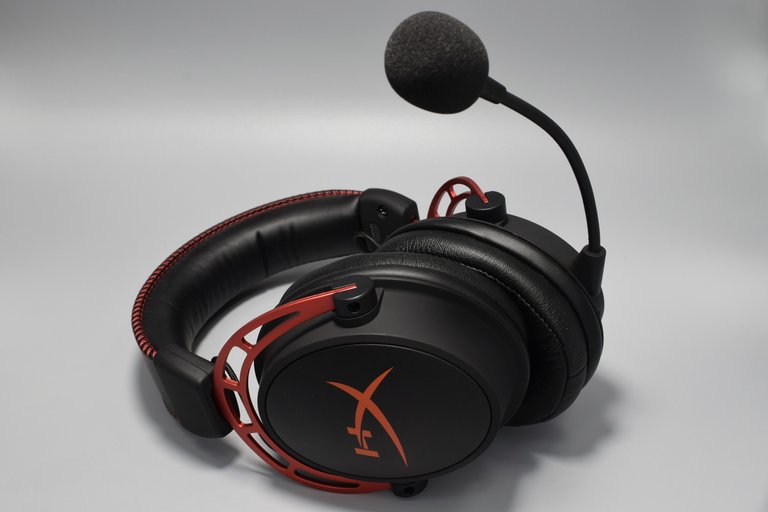
Like on the HyperX Cloud, the noise cancellation microphone is detachable and comes with a flexible arm that can be easily adjusted in any position. Honestly, I would have enjoyed a sliding mechanism a lot more. It can become quite frustrating that every time you go into a gaming session you have to accurately insert the microphone into the dedicated jack. Not to mention that you can miss it very easily.
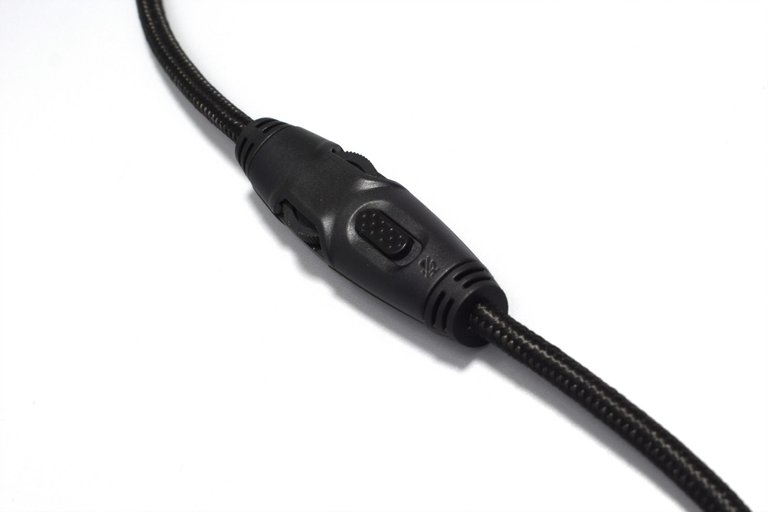
Both cables are relatively thick, are worn in a good quality textile sleeve and have gold-plated connectors. On the dual-jack extension, we also have a volume adjustment potentiometer and a microphone on / off switch. Personally, I'm not a fan of integrated thread controls as they tend to trigger accidentally. Plus, from what I have seen so far, these potentiometers are among the first things that break. This has been the case for the Logitech G233, Razer Kraken Pro and SteelSeries 9H in the first months of use. Fortunately, HyperX Cloud Alpha comes with two years of warranty.
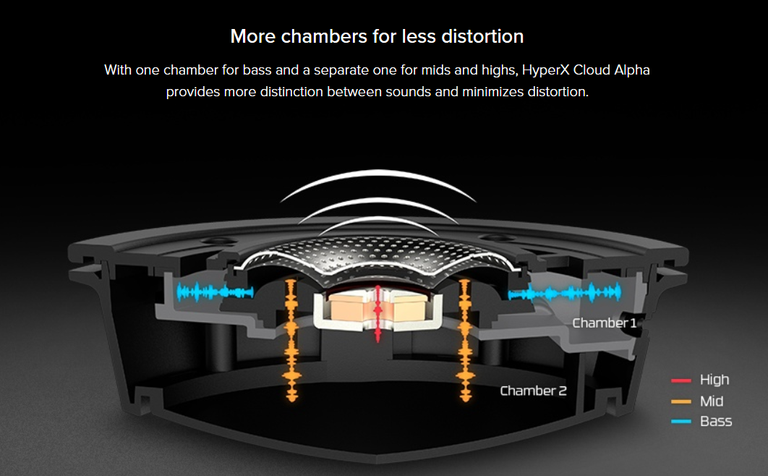
At a 65-ohm impedance, it's not really necessary to use a very complex audio setup, with an external DAC and amplifier, as the earphones perform quite good on any modern audio card, dedicated or not. I tested them with the integrated audio card of the X370 XPower Gaming Titanium motherboard, which is based on the Realtek ALC1220 chipset, and I must admit I was impressed. Regardless of the usage, gaming or multimedia, the 50 mm dual-chamber drivers deliver a clear sound, with an almost perfect distribution of high, medium and low channels, with little to no distortions even at high volumes. They're the kind of universal headphones that you can use in optimal conditions for anything: gaming, music, movies and even Skype calls. The bass is a bit more anemic than on the HyperX Cloud Revolver, Cloud Alpha delivering a linear sound without preferential adjustments for certain frequency ranges. Even so, the experience is magnificent and there were no situations in which I was unhappy with the quality of the audition. They performed very good even on my PS4.
Regarding the experience in games, I'm very glad that we do not have surround sound or other software aberrations that make the sound feels like it's coming from a barrel and overturns any attempt on identifying enemies on the battlefield. For gaming, the HyperX Cloud Alpha configuration is perfect. Not having the tendency to favor the lows, as it happens with most gaming headsets, identifying the mediums and highs, such as steps, gunfire and even grenade pins, becomes much easier. This is especially noticeable if you play Battlefield 1, Player Unknown Battleground's, CS: GO or other high-profile titles. In other words, the HyperX Cloud Alpha fully deserves the label of "gaming headphones". The noise microphone also received notable improvements, now offering a cleaner sound and better noise cancellation. However, when compared to other headsets in the same price range, such as the Logitech G433 or the Razer Kraken Pro V2, the sound dynamics are not as good, with slight static noise, regardless of the platform or audio card.

If you're not interested in RGB lights and surround sound, the HyperX Cloud Alpha is perhaps the most attractive gaming headset that you can find in a budget of about 100 USD. Coming in a solid, attractive and comfortable construction, it delivers exceptional comfort, while also providing a very good sound quality. Besides that, thanks to the modular cable design, it can be used on both PC and gaming consoles. Of course, there are some shortcomings. The in-line control looks pretty fragile and the microphone is not that great. However, I must say I'm quite impressed. The direct competitors, the Logitech G433 and the SteelSeries Arctis 5, have 40 mm speakers and polycarbonate-made structures, while the HyperX Cloud Alpha features 50 mm speakers and a more durable aluminum headband. I also appreciate the inclusion of a carrying pouch in the box.
Thanks for the review.
Congratulations @razvanbalica! You received a personal award!
You can view your badges on your Steem Board and compare to others on the Steem Ranking
Do not miss the last post from @steemitboard:
Vote for @Steemitboard as a witness to get one more award and increased upvotes!